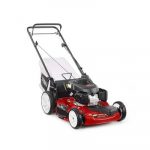
One way to remedy drainage problems is to construct a rain garden.
(Courtesy: Roger Soh at flickr.com)
One way to battle drainage problems on your lawn is to create a rain garden. A rain garden is a shallow, constructed depression that is planted with deep-rooted native plants and grasses. It is located on a lawn to receive runoff, slow the water down, hold the water for a short period of time and allow the water to naturally infiltrate into the ground.
Making one for your own yard is not very difficult. However, you need to take care of some details before you actually begin to construct it.
Basic Design
The first thing you need to consider is its location. Here are some parameters.
· It should be placed away from the house. The purpose of the garden is to draw water. Obviously, you don’t want to draw water to your house and its foundation. The garden should be placed about 15-feet away from your home.
· It should be placed away from your septic system. If the garden is too close, it can influence how your septic system operates. It is recommended that the garden be placed at least 10 feet from a septic system.
· It should be located in direct or partial sunlight. The plants that will grow in the garden perform best in these conditions
· It should be within access of a downspout. You will want to extend a downspout out to it.
Building the Rain Garden
After you have decided where to place it. The next thing you need to consider is how big you want it. There are no rules as to its size. That is totally up to you. However, you should realize that the larger the garden is, the more runoff water it can handle and the more space you’ll have for the plants.
Once the size has been determined, you can start digging. Experts suggest that the rain garden should be between 4-inches and 10-inches deep. How deep it actually is depends on:
· Its holding capacity.
· Its width.
· The type of soil you have.
Rain gardens that are not wide will need to be deep and have a lot of holding capacity, especially if it will be in clay soil. If you have sandy soil, then the garden can be wider and shallower.
When considering dimensions, the depth starts at the lowest edge of the garden. If you are placing the garden on a slope, the lower end of the slop is the starting point for measuring depth. The rain garden should be level across the bottom of the bed.
Once you have figured out the dimensions, you can start to dig. You can dig with a shovel if the garden won’t be too big. However, if you decide to have a large garden, then you probably should rent a backhoe. You can use the removed soil as the mound of the garden. The mound should be three-quarters the size of the bed. If the garden is on a slope, then the mound or berm should go on the lower end of the slope.
After it is dug, connect a downspout to the garden. This can be done with a swale, an extension on the spout or through an underground pipe.
Rain Garden Plants
There are wide assortments of plants that would be ideal for a rain garden. A sample include:
Blue Flag Iris
Cinnamon Fern
False Aster
Ironwood
New England Aster
Maidenhair Fern
Milkweed
Smooth Penstemon
Joe-Pye Weed
Virginia Mountain Mint
Wild Columbine
Bushy Aster
Sedge
Yellow Coneflower
Fox Sedge
Jack-in-the Pulpit
New York Fern
Ohio Goldenrod
Rough Goldenrod
Stiff Goldenrod
Switchgrass
White False Indigo
Wild Quinine
Cardinal Flower
Dwarf Cornel
Glade-Fern
Lady Fern
Nodding Pink Onion
Prairie Blazingstar
Royal Fern
Black-Eyed Susan
Tufted Hairgrass
White Turtlehead
Wintergreen






